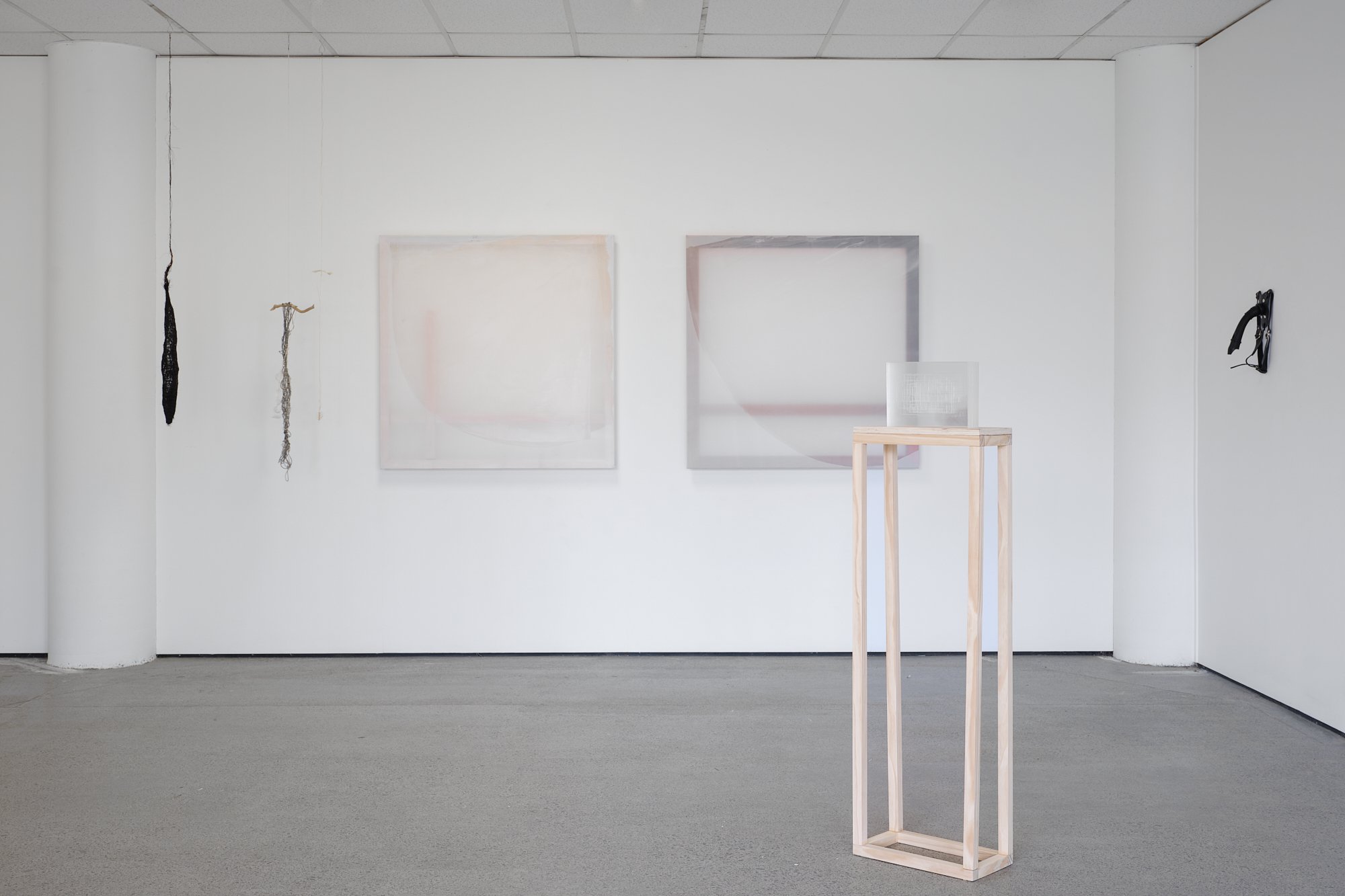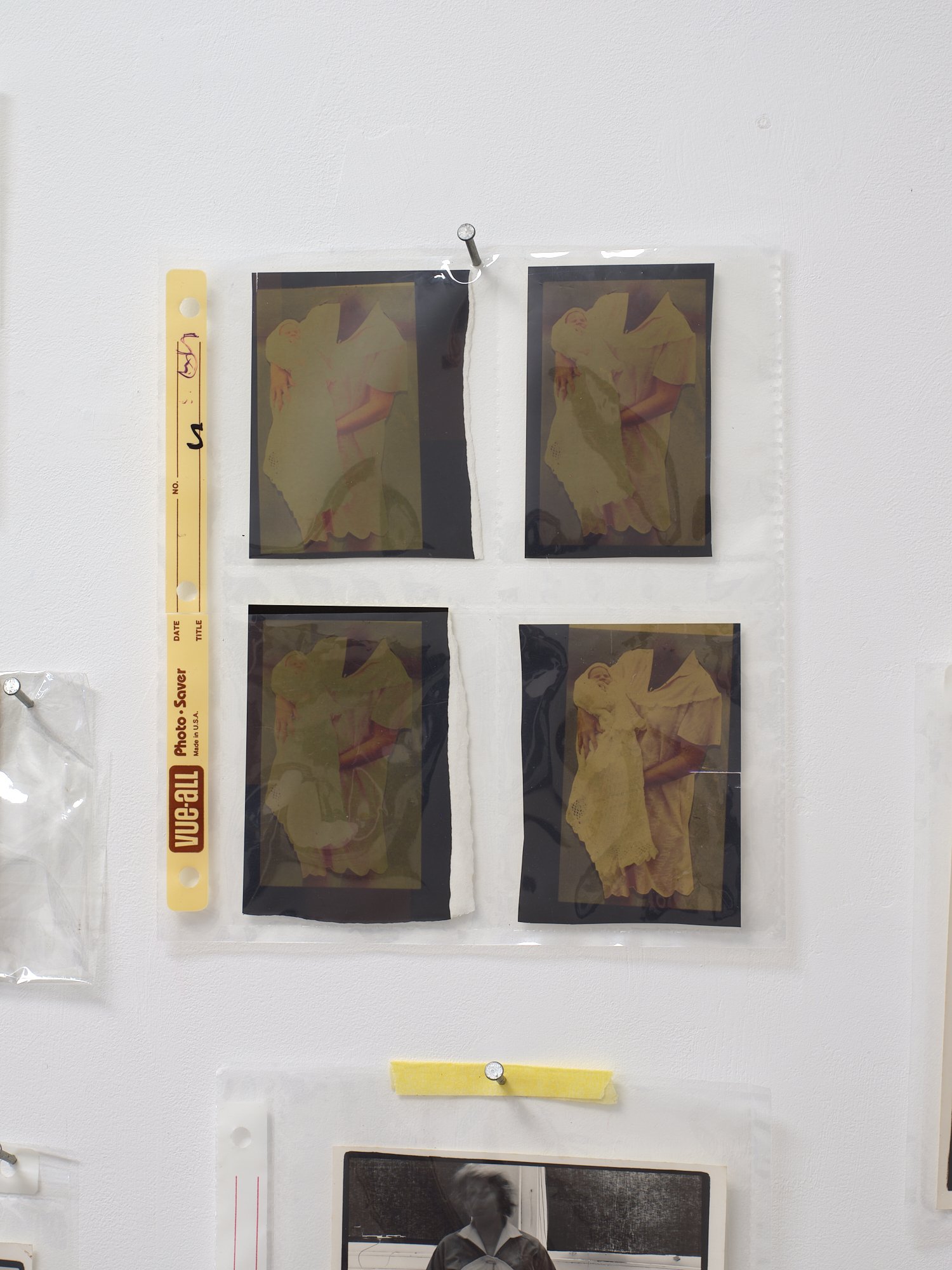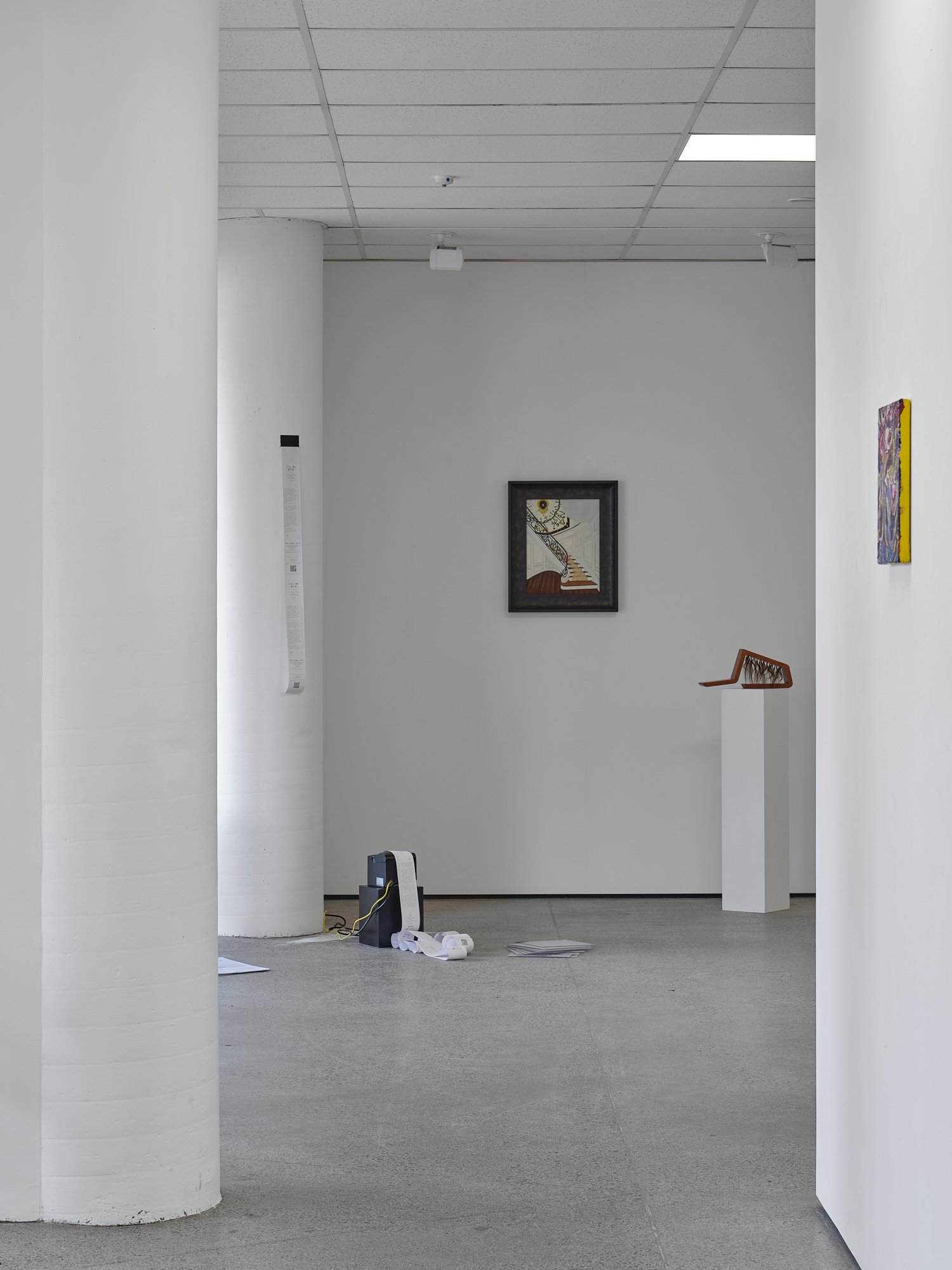Iteration 22 Suburbia
For Iteration 22 of the curatorial project mothermother, the artists explore the pleasures and anxieties of the sub-urban: what is allowed, what is excluded… and what could be.
Suburbia – a place where most of us live, but the art world often disdains. The first rail-commuter suburbs developed in the late 19th century as a middle-class response to the dirt and disease of the industrialising city. The low-density, car-dependant suburb was the dominant form of post-war cities, from Los Angeles to Auckland. The urban shifts required by decarbonisation, as well as the enforced domesticity of the last few years and the devastation of climate change have snapped our focus to the neighbourhood.
Iteration 22 includes work by Philippa Blair, Stella Brennan, Layla Rudneva-Mackay, The Estate of L.Budd, Inga Fillary, Natalie Tozer, Teresa Peters, Maree Horner, Ekaterina Dimieva, Monique Lacey, Rebecca Wallis, Kelly Pretty, Janet Mazenier, Lillie Balfour, Rose Meyer, Robyn Walton, Jana Wood, Michelle Mayn, Kiriana O’Connell, Jessica Douglas, Lucy Boermans, Karen Rubado, Tori Beeche, Susan Nelson, Melanie Arnold and Caitlin Devoy.






















































BIOGRAPHIES
NATALIE TOZER is a multimedia artist based in Tāmaki Makaurau exploring narratives of the underground to unearth objects and knowledge. Working with time-based processes and materiality she is interested in mythology, debt forgiveness, access to the ground, digging, science fiction, anarchist anthropology and the collective.
Natalie is a director at LOT23 Media which produces video media focussing on the collective. She is the founder and caretaker of the artists-run project and collective mothermother which continues to support curatorial activism for underrepresented artists since 2019.
JANET MAZENIER's paintings engage with a language of realism and abstraction allowing an experimental approach for each artwork creation, every layered mark, stroke and daub acting as a portal into the cognitive site of the encounter responsible for its existence. Possibilities are discovered via slow walking, looking and thinking, as a result encouraging discoveries of less-observed multiplicities of strata and materials.
Janet walks her neighbourhood of Devonport in Tāmaki Makaurau with experts such as archaeologists, soil specialists, historians and others to understand what has gone before, so the land can be re-presented in a different context, hinting at the hidden and the unexpected, the landscape and its history more deeply understood via these others’ eyes. As a result, knowledge gained reflects at times the uglier elements within the landscape such as toxic waste; and the beauty contained within a multi-layered strata of wetland material.
Paintings echo how Papatūānuku slowly builds layers of soil over time, the layered, constructed surfaces drawn on, covered up and excavated many times to reveal aspects of the work beneath. As a painting might have 40-50 layers, their history develops archaeologically, reflecting the land with its multi-dimensional, complex layers.
KELLY PRETTY (MFA, University of Auckland) is a New Zealand based artist and educator working in Tāmaki Makaurau. Her work actively experiments with the intimate relations between art and social living, investigating the transformative potential of creativity and education in the community and world.
LILLIE BALFOUR is an Ōtautahi-based artist interested in the overlaps between media, reality and expectation. Their work engages with text and imagery to locate memories and feelings just beyond reach, and their practice is grounded in bookmaking, printmaking and painting.
JANA WOOD (Ngati Raukawa/Ngati Pakeha)’s paintings sit within a liminal space of abstraction and representation, and are the result of a slow looking and feeling, hearing, listening and being in the wild environment that surrounds her studio at Port Waikato. Wood’s imagery and framing devices work metaphorically to express environmental concerns, the colonial grid, and re-wilding of spaces.
LUCINDA BOERMANS is a motion design lecturer, interdisciplinary artist and Ph.D. candidate at Auckland University of Technology. Boermans’ research pathway looks to "atmospheres in motion" to realise new "points of crossing" (affective resonance) that could inform the establishment of a new, intercultural art school outside "the institutional norms", here in Aotearoa, New Zealand. Boermans completed a Master of Fine Arts at Elam School of Fine Arts, The University of Auckland in 2021.
MONIQUE LACEY’s work engages with commercial packaging materials purchased at local hardware stores and offer structural propositions of both volume and surface. The materials are assembled and covered with plaster and other materials, which act as both binding agent and new surface to conceal and/or reveal the structure underneath. While there is an adherence to truth of materials, the materials are used to construct a level of artifice in the work.
ROBYN WALTON's sculptural practice appropriates encountered mundane material as part of an ongoing concern with themes of utility and labour, specifically in relation to reproductive and maintenance work. Re-presenting or subverting functional everyday objects can blur the boundaries between art object and utilitarian object, thereby focusing attention upon the undervalued tasks they represent.
MICHELLE MAYN works primarily with harakeke, New Zealand native flax, using traditional Maori techniques of weaving, binding, twining and knotting; often incorporating found objects. These time intensive methods of gathering, processing and making develop an intimate relationship with material and the natural world. Material, light, form and movement are combined to create ephemeral object-based installations and sculptures that explore the mauri (life force) of materials beyond the world of sense perception.
KIRIANA O’CONNELL (Ngāti Tukorehe, Pākehā) is a Tāmaki based weaver who works with both customary and contemporary materials including harakeke, kiekie, pingao, native and commercial dyes. She embraces traditional techniques and patterns in her work, and is continually inspired by both the mastery and artistry of her ancestors. She has been tutoring raranga workshops since 2012 and her work has been commissioned for the media industry, as well as being exhibited annually with Kaipātiki Weaving Roopū.
STELLA BRENNAN is an artist based in Tāmaki Makaurau, New Zealand.
Her work has been shown in Australia, Asia, North America and Europe. Her videos have been exhibited in the Sydney and Liverpool biennials and her installation Wet Social Sculpture, featuring whale song, psychedelic film and a fully operational spa pool, was a nominated finalist in the 2006 Walters prize.
Stella curated the exhibitions Nostalgia for the Future (Artspace, Auckland 1999), Dirty Pixels (Artspace, the Adam Art Gallery, the Dunedin public art gallery and the Waikato Museum of Art and History, 2002-3), and co-curated Cloudland: Digital Art from Aotearoa, New Zealand (the Substation Singapore, 2008). She has attended residencies in New York, Sydney, Hamilton and New Plymouth.
Stella has written essays for artists including Ann Veronica Janssens and Patricia Piccinini, as well as art criticism for magazines including Art Asia Pacific, Eyeline Magazine, Australia, the New Zealand Listener and Art New Zealand. Stella co-founded the Aotearoa Digital Arts Discussion list and in 2008 she and Su Ballard edited the Aotearoa Digital Arts Reader, the first comprehensive text on digital arts practice in New Zealand.
Stella Brennan is represented by Trish Clark Gallery.
LAYLA RUDNEVA-MACKAY’s work explores ideas around women’s bodies, motherhood, home, and care. Her practice investigates the need to articulate and explore ideas, thoughts, and feelings that she finds difficult to express in language.
Layla Rudneva-Mackay is represented by Stark White Gallery.
JESSICA DOUGLAS’s practice investigates the complexity of relationships which are inherently intertwined and interconnected, to acknowledge that we rely on each other for our physical and psychological well being and survival.
She draws on the metaphor of the cell walls semi-permeable membrane to evoke the concept of separation and transmission simultaneously; conveying ideas of transference, seepage and flow between distinct separate entities.
Application of paint brushed on in thin wash overlapping layers illustrate ideas of complex interconnections, proximity and exchange. Lines / edges act as barriers and bridges halting flow while at other times creating connecting channels. Similarly, colour oscillates between oppositional strident combinations of complementary colours and interconnected close colour relationships.
Her practice is a way of questioning a transitional space that evokes an inner world revealing rational and irrational truths. Each painting emerges from the canvas through a meditative and intuitive decision making process.
INGA FILLARY’s work attempts to operationalise the highly abstract theories found in modern philosophy. Low hierarchy substances, and materials disturbed from their former authority are the cornerstone of Fillary’s practice. When utility is removed, objects are freed to become something other, images can be drawn away from fine art media to subtly reposition the way ‘messages’ can be transmitted, the material is very important. Deeper realities that lie beneath the perceivable surfaces emerge and a material ‘life’ is uncovered. Fillary experiments with the onslaught of time on material, she addresses the burden of humankind upon the earth and the possibility of aesthetic experience to provide an oblique approach to a veiled reality.
REBECCA WALLIS’ practice has predominantly used the traditional painting structure while simultaneously questioning it. She makes analogies between the Self and the painting. In her work Wallis exhibits a slipping away and a resisting of containment, referring to the allusive felt experiences of the Self and it's fluid positions between Self and Other, Subject and Object. It is her understanding of being outside of language, Informed by Lacan's theories of the Real and Kristeva's theories of Abjection.
EKATERINA DIMIEVA’s practice explores conflict, interference and the morphing states of transformation. It approaches the notion of painting as a sort of multiple flux. It’s a sense based enquiry that rejects answers in the singular. Her work strives to embody a rhythmic play of flows and forces, while generating their own multiplicity through the materiality of paint. The focus on sensation and utopia is central to her act of painting, with an emphasis on profusion, abundance and excess - in both the mark-making as well as the persistent use of pattern and a saturated colour palette.
Dimieva achieves a raw complexity to the surface with her wet-in-wet technique that gives way to dry brush staining. The overall effect compels the viewer to search out a potential intent or pattern. Yet, the patterning seems to extend to something off canvas... discordant and unravelled, it speaks to a different sort of grid or pattern matrix.
Ultimately the work is more like a puzzle, a riddle that celebrates the complex, the evolving, the sensual, and the feminine.
MAREE HORNER is a Taranaki artist currently investigating processes of printmaking, painting and digital imagery. She completed her MFA at Elam in 1974. Her work from this time was a forerunner in Post Object art movement in New Zealand, celebrated with the exhibition Groundswell: Avant-Garde Auckland 1971-1979 at Auckland Art Gallery in 2018/19 and earlier in Action Replay 1998, at Artspace, the Auckland Art Gallery (New), and the Govett Brewster Art Gallery. Diving Board 1972, now in the Govett Brewster Art Gallery collection was exhibited as a key work in All Lines Converge 2017/18 and in the canon of Ruth Buchanan’s The scene in which I find myself Or, where does my body belong, 2019/20. In 2019 Chair, 1973 was recreated and shown at Anderson Rhodes Gallery, New Plymouth. Her graphic works stem from the archaeology of the ideas that can be traced back to Chair 1973, include Familiar monuments at the Govett Brewster Art Gallery 1996, Monumental obsessions-wallpaper, a Cameo Wall project at Te Tuhi 2006 and Necessary Substratum, Anderson Rhodes Gallery 2018. In 2020 Chair 1973, was acquired by the Auckland Art Gallery and in early 2023 was exhibited in Ruth Buchanan’s inaugural show Door,window, world, in a pairing with J.C.Sturm at Artspace Aotearoa.
TERESA PETERS is an artist and a filmmaker in collaboration with Florian Habicht. She currently works in clay, ceramics and moving image, ‘Excavating’ primordial totems and navigating pusedo - archaeology as we move through the Anthropocene. Earth bodies, forming and transforming - molten entities in intimate combustion.
MELANIE ARNOLD has been exhibiting since graduating with a Bachelor of Fine Arts from Whitecliffe College of Arts and Design in 2016. Her work was selected for Eden Arts Art School Awards Exhibition in 2016. Arnold’s first solo show Shift, 2017 was installed at Pukekohe’s Auckland Council public gallery Franklin Art Gallery. Since 2016 Arnold has exhibited sculpture in the following group shows: Borderline, Pearce Gallery, Auckland, Paperwork, DEMO, Auckland, Orbital, Comet Project Space, Auckland and Can’t put My finger on it, DEMO, Auckland. Other qualifications include a Diploma of Primary Teaching from Auckland College of Education in 1993.
Melanie’s practice makes use of discarded industrial materials, former boundaries of our built environments which hold both a sense of strength and fragility. Collecting readymade objects and shifting them to a new site. This process is a means for her to interrogate structures of meaning and associations of value. Meaning and matter are not fixed but indeterminate; pliable and never complete. What we value or choose to discard are measured by underlying systems of hierarchy. However matter has the ability to extend beyond oppositions, to continuously transform and reconfigure suggesting future meaning is not only unknown, but infinite in the multiplicity of its potentiality.
Christchurch-born, PHILIPPA BLAIR has exhibited her work internationally in a career spanning four-plus decades. She has held more than 100 solo exhibitions, has work in numerous public and private collections across the globe, and has been the subject of many magazine articles, reviews, and art books.
Blair’s extensive and practice is based around expressionistic, semiabstract painting and print making. To quote American ARTNews critic, Lily Wei, “Blair employs a full arsenal of abstract expressionist techniques, including the turning of her canvases so that there is no fixed point of view. Her gestures can crash against each other like a multi-car pile-up but in fact are controlled impulses, rhythmically taut, expertly choreographed body movements embodied in stroke and colour, a bravura orchestration that is both physical and emotional.”
SUSAN NELSON is a Tāmaki Makaurau-based multi-media visual artist who’s practice celebrates authentic creative process as an alchemy that occurs between matter, imagination, and the unconscious. Curiosity and playful exploration are at the heart of her work which spans an eclectic range of mediums from bronze, plasticine, paper, yarn, wax, wood and clay to found objects.
Susan has studied at the Vancouver Academy of Art (Canada), the Otago Polytech School of Art & Design, Whitecliffe College of Art & Design (MA AM) Auckland, and Elam School of Fine Arts, Auckland University (PGDipFA). She has work in the Wallace Art collection and recent exhibitions include The Molly Morpeth Canaday 3D Award Show 2022 Whakatāne, Unseen, Tuesday Club 2022 Auckland, and mothermother iteration 20 Aotearoa Art Fair 2023. www.snartist.co, @snartist_
TORI BEECH lives and works in Auckland Tāmaki Makaurau. She has a Master of Fine Art from University of Auckland’s Elam School of Fine Arts (2020). Her work has been included in the finalist exhibitions for the Molly Morpeth Canaday Award (2021), New Zealand Painting & Printmaking Award (2020), and the Sunshine Coast Art Prize (2018).
Recent exhibitions include IDYLL at Page Galleries, Wellington (2022); Iteration 14 & 20 at mothermother, Auckland (2022/23); UNSEEN at The Tuesday Club, Auckland (2022); Caught up in Circles at Föenander Galleries, Auckland (2021) and Spaces of Synchronicity at Malcolm Smith Gallery, Auckland (2021).
Beeche’s paintings emerge through a process of extracting poetic moments from historical image archives interwoven with Beeche’s personal memories and imaginings. Often reflecting the artist’s own Scandinavian heritage, the works are imbued with a nostalgic longing. www.toribeeche.com / @tori.beeche
ROSE MEYER’s practice is largely driven by a methodological engagement with, and investigation into, types of information. Measurement and quantification is part of an investigation, but Meyer never hypothesises or analyses for a deeper understanding, preferring to allow an ambiguity of meaning, a realisation that mark-making or language is limited in its ability to explain experience or to convey understanding.
Rather like fieldwork, Meyer’s work is project based, and data is collected and translated into a visual form through mark-making, wherein parameters are set and actions are allowed to play out with no predetermined outcome.
